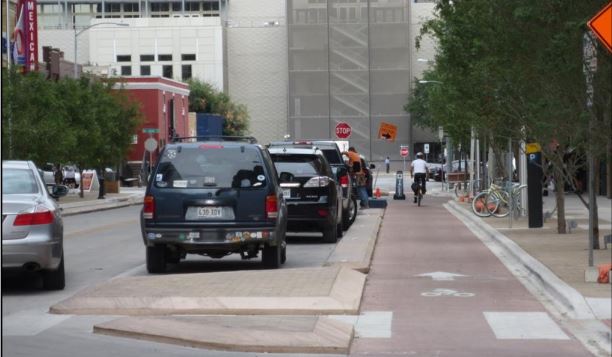Commission changes position, endorses bike plan
Monday, October 27, 2014 by
Elizabeth Pagano A second visit to the Planning Commission proved much more successful for the Bicycle Master Plan, which will now move on to City Council with a full slate of commission recommendations.
The last time Planning Commissioners considered the plan, they did not recommend it to Council. Though commissioners voted 4-1 in its support, that wasn’t enough to earn their recommendation in July. This time, the Planning Commission voted 7-0 to approve the plan, with Commissioners Brian Roark and Jean Stevens absent.
“I’m glad to see that you hung in there and came back to us,” said Chair Danette Chimenti.
Commissioner Richard Hatfield revisited concerns expressed by Roark, who voted against the plan last time, regarding bike lanes that had taken out a traffic lane on Guadalupe Street, which complicated his commute. As he did at the previous meeting, Nathan Wilkes, who works for the city’s bicycle program, explained that the lane was actually being used as a bus lane, though a bike lane had also been added.
Commissioner James Nortey asked whether there had been any other opposition to the plan other than Roark’s.
Wilkes said that out of 2,000 comments on the plan, bicycle program staff hadn’t come across a single negative comment.
“People are very supportive of the switch to physically protected infrastructure,” said Wilkes. “It’s fundamentally changed the conversation. Because when we go and talk about a bicycle lane on the street, I think stakeholders who aren’t currently bicycling think, ‘Oh, that’s for someone else.’ But when they see a protected lane, they think, ‘Oh, I might actually use that.’”
“I think it’s surprising that’s the case, but there’s been literally no pushback,” said Wilkes.
Wilkes explained that the plan calls for infrastructure changes that will help increase bike riding in the city. For example, painting bicycle lanes on roads is no longer considered a best practice. He said that, though it may be a useful tool, painted lanes appeal to only 15 percent of Austinites. By providing an element of physical protection, that number increases to as much as 55 percent.
Commissioner Lesley Varghese said that she hoped the plan was intended to serve everyone in the city — not just those who could afford to live downtown, but also those who might depend on transportation other than cars.
Wilkes said that issue had been anticipated in the plan. He said that in forming the plan, the group tried to create something that served more than those who could afford to live in the central city. He pointed out that the plan has an equity section that talks about the need for retaining affordable housing in places where short bicycle trip patterns were possible.
“It all goes hand-in-hand with smart development patterns,” said Wilkes.
The master plan is an update to the city’s 2009 Bicycle Plan and is citywide in scope. Council will conduct a public hearing on the Bicycle Master Plan at its Nov. 6 meeting.
You're a community leader
And we’re honored you look to us for serious, in-depth news. You know a strong community needs local and dedicated watchdog reporting. We’re here for you and that won’t change. Now will you take the powerful next step and support our nonprofit news organization?









